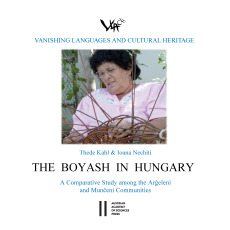Ioana Nechiti / Thede Kahl
The Boyash in Hungary
A Comparative Study among the Arĝeleni and Munĉeni Communities
Reihe: VLACH - Vanishing Languages and Cultural HeritageThe present book is concerned with the language and culture of the Boyash “Gypsies” in southern Hungary, who speak archaic dialects of Romanian and call themselves “băiaşi”. Their varieties may be regarded as endangered, with the spoken vernaculars, Arĝelean and Munĉan, suffering different degrees of loss. The Munĉan vernacular investigated in the village of Alsószentmárton is most probably in the second stage of loss, during which the language of the majority increasingly spreads into the language of the minority, while the latter is used mostly within the family by the elderly. Hungarian is beginning to replace the Boyash language even in everyday life. The Arĝelean dialect from the village of Gilvánfa and from Pécs is in the third stage, which is characterized by the loss of vocabulary and the inability to create new words, as the majority language has definitively replaced the minority language. Factors such as way of life, social structures, the intensity of contact with the majority population, religion, the prestige of the language, the code function of minority languages and economic dependency have all played a decisive role in the progressive replacement of the Boyash language by the majority language Hungarian, a process that dramatically accelerated in the second half of the 20th century and especially after Hungary’s accession to the EU. In the last three decades, the Arĝelean vernacular has enjoyed greater prestige than the Munĉan and it is highly probable that the Arĝelean vernacular will become the dominant one if the Boyash language survives in the Arĝeleni communities.
